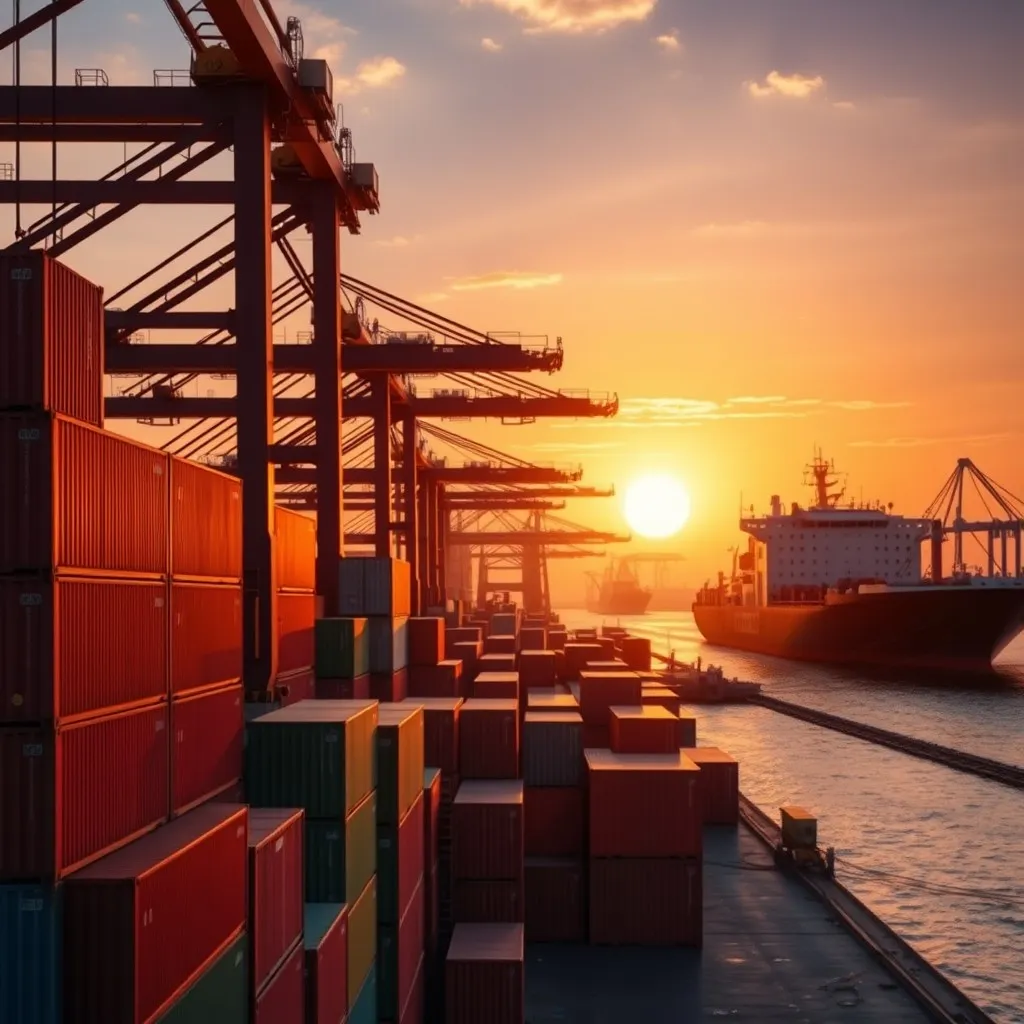DDP Shipping from China
Competitive Rates for DDP Shipping

Sea Freight from China

Air Freight from China

DDP Shenzhen

DDP Guangzhou

DDP Shanghai

DDP Ningbo-Zhoushan

DDP Xiamen

DDP Qingdao

DDP Dalian
Calculate Your Shipping Costs from China
FCL Shipping from China
FCL Shipping from China
More Services When Shipping from China

Pickup and Delivery

Warehousing & Distribution

Cargo Insurance

Loading Supervision

Custom Clearance

Freight Forwarding
Track and Trace

Reverse Logistics
Your Premier Freight Forwarder from China

DDP Shipping From China — The Definitive FAQ Guide
When you’re diving into the world of international trade, especially with China, you’ll encounter a term that can make or break your importing experience: DDP shipping. But what exactly is DDP, and why is it crucial for your business?
DDP, or Delivered Duty Paid, is a shipping arrangement where the seller takes on nearly all the responsibility and risk in the shipping process. It’s like having a VIP pass for your goods, where your supplier handles everything from factory to your doorstep.
Understanding DDP is vital when importing from China because it can significantly impact your costs, timelines, and overall importing experience. In this guide, we’ll unpack everything you need to know about DDP shipping from China, from its core principles to practical tips for making it work for your business.
Understanding DDP Shipping
Definition and Key Principles
At its core, DDP shipping means the seller is responsible for delivering the goods to the agreed destination in the buyer’s country. This includes clearing the goods for import and paying all duties, taxes, and other charges.
When applied to imports from China, DDP means your Chinese supplier will handle all aspects of shipping, including:
- Export packing
- Export customs clearance
- Freight charges
- Insurance
- Import customs clearance
- Delivery to your specified location
Under DDP terms, the seller bears all risks and costs until the goods are delivered to the agreed destination. This comprehensive service can be a game-changer for businesses looking to simplify their import process.
Cost Components of DDP
When you’re quoted a DDP price from a Chinese supplier, it typically includes:
- The cost of goods
- All transportation costs (land, sea, or air)
- Export and import customs clearance fees
- Import duties and taxes
- Delivery to your specified address
However, be aware of potential hidden costs. Some suppliers might inflate the DDP price to cover potential risks or unexpected fees. It’s crucial to clarify what exactly is included in the quoted price to avoid surprises later.
Remember, while DDP pricing might seem higher upfront, it often provides more predictability in your overall importing costs.
Risk Transfer in DDP
One of the key benefits of DDP is the extended period of risk coverage for the buyer. Under DDP terms, the risk doesn’t transfer to you until the goods are delivered to the agreed destination.
This means that if anything happens to your shipment while in transit from China – be it damage, loss, or delay – it’s the seller’s responsibility to resolve the issue. This can provide significant peace of mind, especially when dealing with long-distance shipments from China.
However, don’t overlook the importance of insurance. While the seller is responsible for arranging insurance under DDP, it’s wise to confirm the extent of coverage to ensure it meets your needs.
DDP vs. Other Incoterms
Comparing DDP with Alternative Shipping Terms
To truly appreciate DDP, it’s helpful to contrast it with other common Incoterms:
- DAP (Delivered at Place): Similar to DDP, but the buyer is responsible for import duties and taxes.
- FOB (Free on Board): The seller’s responsibility ends when the goods are loaded onto the ship at the port of origin.
The key difference lies in the division of responsibilities and costs. DDP places the most obligation on the seller, while terms like FOB shift more responsibility to the buyer.
DDP might be preferable when you’re new to importing, dealing with complex customs procedures, or want to simplify your supply chain management.
Advantages of DDP for Chinese Imports
Using DDP when importing from China can offer several benefits:
- Simplicity: You don’t have to worry about complex shipping arrangements or customs procedures.
- Predictable costs: All charges are included in the price quoted by your supplier.
- Reduced risk: The seller bears the risk until delivery, protecting you from potential issues during transit.
- Time-saving: You can focus on your core business instead of managing international shipping logistics.
Potential Drawbacks of DDP
While DDP offers many advantages, it’s not always the best choice. Some potential drawbacks include:
- Higher upfront costs: Suppliers may inflate prices to cover potential risks and fees.
- Less control: You have limited visibility and control over the customs clearance process.
- Possible overcharging: Some suppliers might mark up import duties and taxes.
- Customs broker relationships: You miss the opportunity to build relationships with local customs brokers.
Managing DDP Shipments from China
Customs Clearance Process
Under DDP terms, your Chinese supplier is responsible for clearing customs in both China and your country. This process typically involves:
- Submitting necessary documents to customs authorities
- Paying import duties and taxes
- Ensuring compliance with local import regulations
While this simplifies the process for you, it’s important to note that customs clearance can sometimes cause delays. These delays can impact your delivery timeline, so it’s wise to factor in some buffer time when planning your inventory.
Document Requirements
Proper documentation is crucial for smooth DDP shipping. Key documents typically include:
- Commercial Invoice
- Packing List
- Bill of Lading or Airway Bill
- Certificate of Origin
- Import License (if required)
- Customs Declaration Forms
To ensure a hassle-free import process, work closely with your Chinese supplier to verify that all necessary paperwork is in order before shipping.
Optimizing Costs and Delivery Times
To make the most of DDP shipping from China, consider these strategies:
- Negotiate terms: Don’t hesitate to discuss and negotiate DDP terms with your supplier. You might be able to secure better rates or service levels.
- Choose reliable partners: Research and select Chinese suppliers and freight forwarders with a strong track record in DDP shipping.
- Plan ahead: Give your supplier ample lead time to arrange shipping and customs clearance, which can help avoid rushed (and often more expensive) shipping options.
- Consolidate shipments: If possible, consolidate multiple orders into a single shipment to potentially reduce overall shipping costs.
- Understand local regulations: Familiarize yourself with import regulations in your country to ensure compliance and avoid delays.
Conclusion
DDP shipping from China can be a powerful tool in your importing arsenal. It offers simplicity, predictability, and reduced risk, making it particularly attractive for businesses new to international trade or those looking to streamline their supply chain.
However, it’s not a one-size-fits-all solution. Consider your specific business needs, volume of imports, and risk tolerance when deciding if DDP is right for you.
Remember, successful DDP shipping relies on clear communication with your Chinese suppliers, thorough understanding of the terms, and careful selection of reliable partners. By leveraging DDP effectively, you can turn the complex world of international shipping into a competitive advantage for your business.
